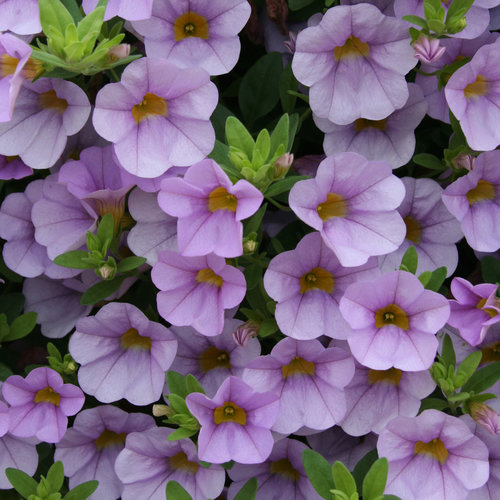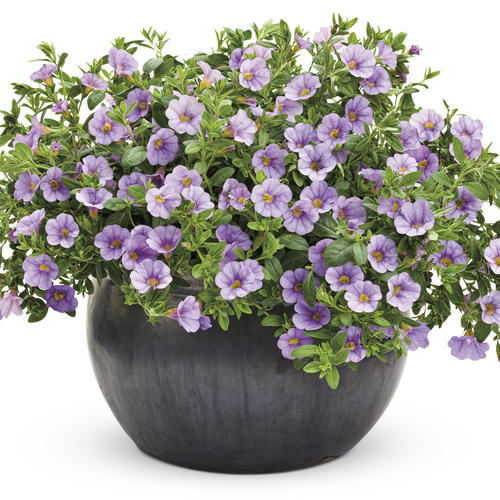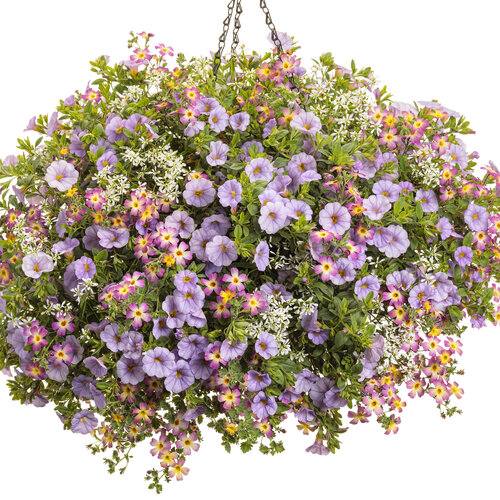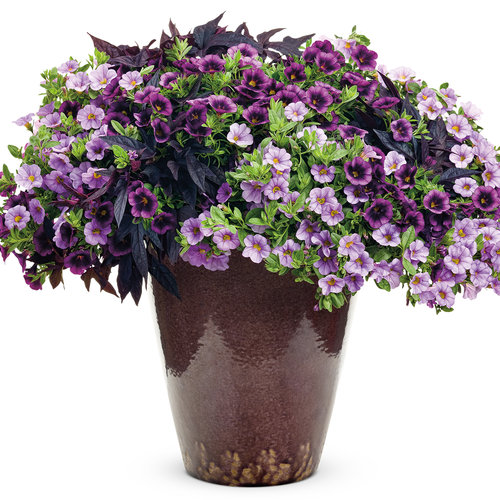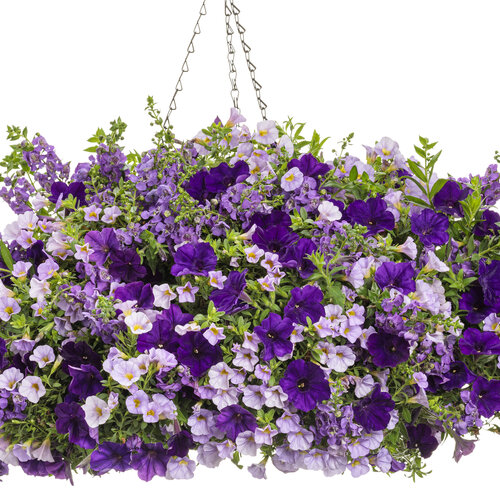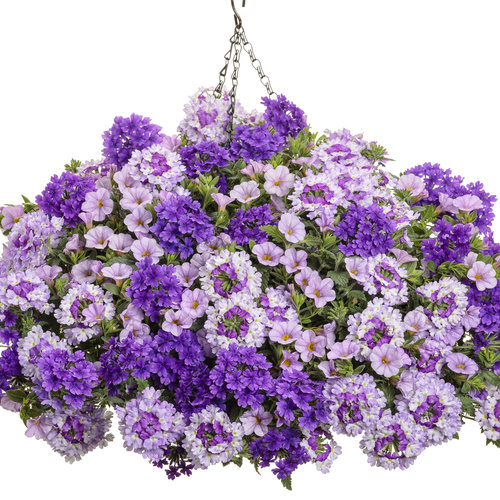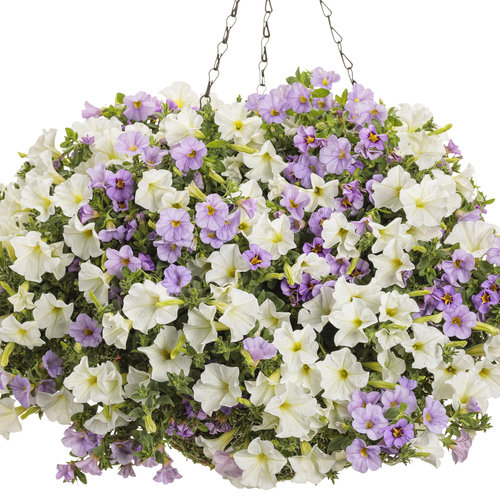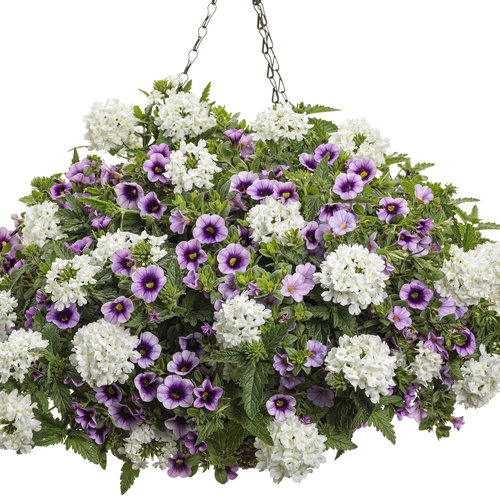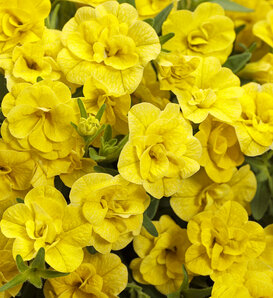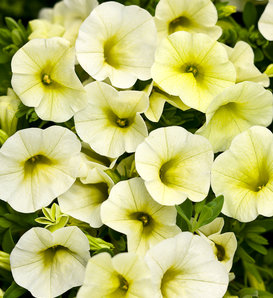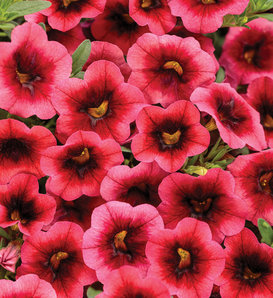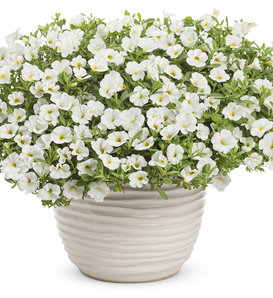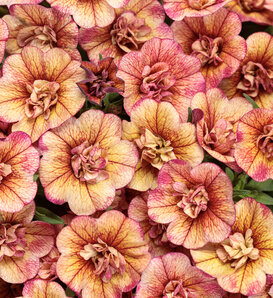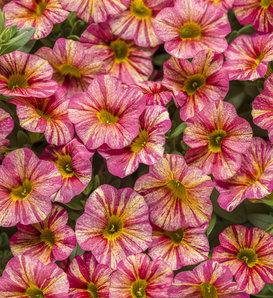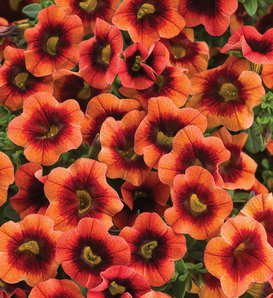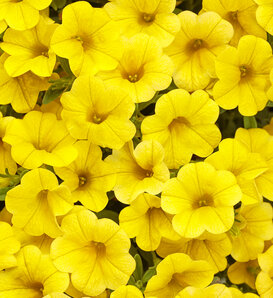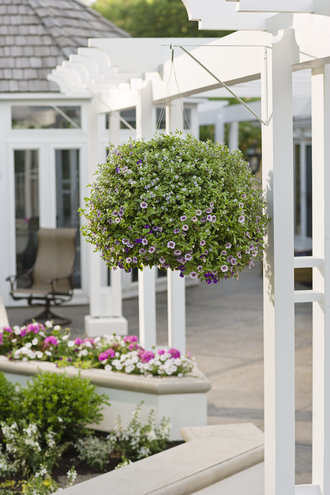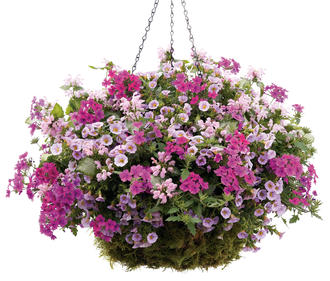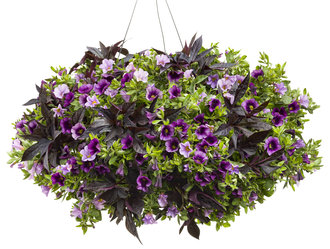Bought one of these June 2015 as almost an afterthought. By summer's end this plant looked more like an azalea bush that blooms all year. Held up well in the cold and finally succumbed in November! Got another this year and it is thriving to say the least. Strong branches and leaves, prolific bloomer and deadheads almost without help. The color is more a faded lavender which I actually prefer. A few of the blooms are almost a soft white with some light purple veins. One of my top performers as it never needs anything but regular watering and fertilizer. Not an eye popping color like sweet tart or tequila sunrise but for durability and unusually large blooms, this one is hard to beat.
Superbells® Miss Lilac Calibrachoa hybrid
- Part Sun to Sun
- Spring
- Summer
- Fall
-
6 - 12 Inches8 - 12 Inches12 - 24 Inches15cm - 30cm20cm - 30cm30cm - 61cm
Features
Abundant, small petunia-like flowers all season on cascading growth; low maintenance
Award WinnerContinuous Bloom or RebloomerLong BloomingFall InterestHeat TolerantDeadheading Not NecessaryAttracts:HummingbirdsCharacteristics
Plant Type:AnnualHeight Category:ShortGarden Height:6 - 12 Inches 15cm - 30cmTrails Up To:30 Inches 76cmSpacing:8 - 12 Inches 20cm - 30cmSpread:12 - 24 Inches 30cm - 61cmFlower Colors:PurpleFlower Shade:LavenderFoliage Colors:GreenFoliage Shade:GreenHabit:Mounding TrailingContainer Role:SpillerPlant Needs
Light Requirement:Part Sun to SunThe optimum amount of sun or shade each plant needs to thrive: Full Sun (6+ hours), Part Sun (4-6 hours), Full Shade (up to 4 hours).
Maintenance Category:EasyBloom Time:Planting To Hard FrostHardiness Zones:9a, 9b, 10a, 10b, 11a, 11bWater Category:AverageNeeds Good DrainageUses:ContainerUses Notes:Calibrachoa do not like to have constantly damp soil. They will do well in the ground only with good drainage. For most gardeners containers are the best use for Calibrachoa.
Maintenance Notes:When planting Calibrachoa I often give the plants a slight trim, using a sharp pair of scissors or pruning shears. While not a necessary step, it will increase branching and may help your plants look even fuller.
Calibrachoa are usually easiest to grow in containers. If the roots are kept too wet it can lead to root rot diseases. In containers, allow the top of the soil to dry before watering again. If your plant is wilting even though the soil is still damp you likely have a root rot problem.
Calibrachoa can be fantastic in-ground plants, but only if they are planted in well-drained soil. Raised beds would be a good choice for planting Calibrachoa in the landscape. In the ground they shouldn't need much additional water unless conditions are very dry. Proper watering is key to growing good Calibrachoa.
The plants are low-maintenance with no deadheading needed. They will do best if fertilized on a regular basis. Calibrachoa can be sensitive to both high and low pH. If your plants have been growing for a while and then begin to look a bit tired and not so good there are several things to try. If the foliage is yellow there are two possible causes. If you haven't been fertilizing regularly they could simply be hungry and in need of fertilizer. Feed them using a well-balanced (look for something with an n-p-k ratio near 24-12-17) water soluble fertilizer. If you have been fertilizing regularly with a well-balanced fertilizer and the foliage is still turning yellow, it is probably because the pH range in your soil has gotten a bit high or low. The most common impact of this is that Iron can no longer be taken up by the plant, even if it is available in the soil.
The common form of Iron used in fertilizer is sensitive to pH changes. If you think pH is your problem you can either try to lower (or raise) the pH or you can simply apply Chelated Iron, which is available at a wider pH range and should help your plants turn green again. You may also be able to find Iron in a foliar spray (which means you spray it on the foliage rather than applying it to the soil) which can also help your plant turn nice and green again. Stop by your favorite garden center and they should be able to help you choose a product to use. Or use our Proven Winners Water Soluble fertilizer, which has the chelated iron.
As the season goes on the plants can sometimes just start to look open and not as good. This can happen even if they are being watered and fertilized correctly. Fortunately this is very simple to fix. Grab a sharp pair of scissors or pruning shears and give the plants an all over trim. This will cause them to branch out more and should stimulate new growth and flowering, especially if you fertilize right after trimming them back. Just like your hair looks a lot better after a trim, your plants often will too. You will sacrifice flowers for a few days, but the plants should shortly come back flowering more than ever. I will usually give my Superbells a trim back in late July or early August. Should your plants have a few unruly stems that are longer than everything else or sticking our oddly, you can trim these stems back at any time. Calibrachoa are very forgiving when it comes to trimming.
An application of fertilizer or compost on garden beds and regular fertilization of plants in pots will help ensure the best possible performance.
Woo-hoo! There is nothing more super than Superbells. If there was a word that meant extra, extra super it still wouldn't be as super as we are. Calibrachoas are a new type of plants that sort of look like little Petunias, which makes sense seeing as we're related. Only Superbells aren't sticky, perk right back up after it rains, and stay compact and bushy even when we are stressed.
Superbells are Proven Winners' newest Calibrachoas. We're the ones covered with hundreds of flowers from early spring all the way through those first light frosts. Just 6 - 10 inches tall, our long, long, trailing branches cascade over the sides of hanging baskets and other containers, and spread over flower beds. Hummingbirds are cuckoo about us.
Vigor, heat tolerance and resistance to disease are traits we all share. So is being an annual except in zones 9 - 11. You don't have to deadhead old flowers or pinch back stems. Water only when the top of the soil feels dry. Too much water makes our roots rot (Ick). Full sun. Fertilize once a month. How extra double super easy is that?
Superbells® Miss Lilac Calibrachoa hybrid 'USCAL87502' USPP 23,230 -
5441321Browse reviews from people who have grown this plant.
-
Matthew Lamb, Maryland, United States, 9 years ago
-
This an absolutely beautiful shade of lavender. Sadly, it is very hard to find in my region.
RB, Idaho, United States, 9 years ago -
The Superbells are a wonderful flower/plant. They grow beautifully in a container or in the ground. The variety of color's that this flower comes in is just amazing. Even though these have a small face or size... when they grow in it is gorgeous and full. Can't say enough about this flower/plant. I also attended the event held by Proven Winner's this recent Saturday, held in Chaska, MN at the Arboretum and Proven Winners had shown some of these Superbells at this event. If you try one new flower this year, this should also be one of them.
Lori Hothan, Minnesota, United States, 11 years ago -
I LOVED THIS PLANT. IT REALLY DID GOOD WITH A DILUTED FERTILIZER EVERY TIME I WATERED. WOULD DEFINETLY BUY IT AGAIN. LOVED THE COLOR.
LOUISE HEMPHILL, Iowa, United States, 13 years ago
Award Year Award Plant Trial 2011 Top Performer Ohio State University Chadwick Arboretum - Springfield 2011 Top Performer South Dakota State - McCrory Gardens 2011 Top Performer Ohio State University Chadwick Arboretum - Springfield 2011 Top Performer South Dakota State - McCrory Gardens 2011 Top Performer University of Tennessee - Knoxville 16 More Recipes- Hit and RunRecipe
What you'll need:
-
2
-
2
-
- Head of ClassRecipeSun14"Pot SizeShades of pink are kept from being too soft by the vibrancy of Superbena® Pink Shades.
What you'll need:
-
1
-
2
-
2
-
-



